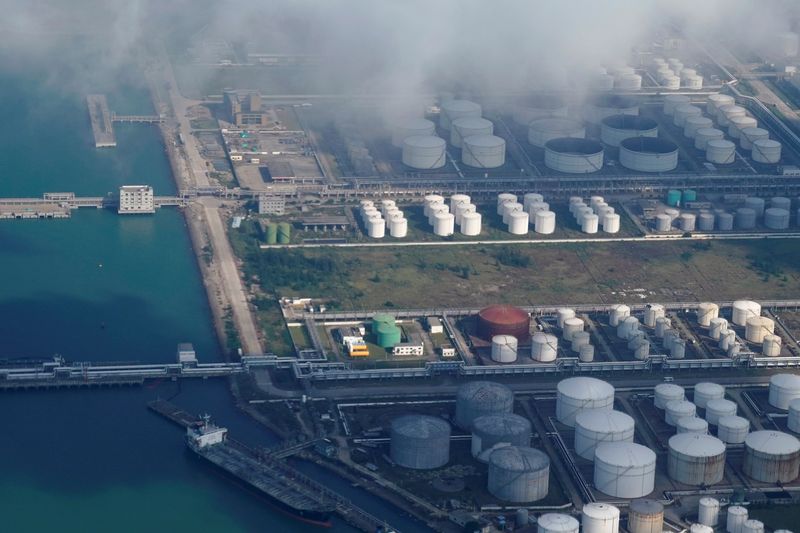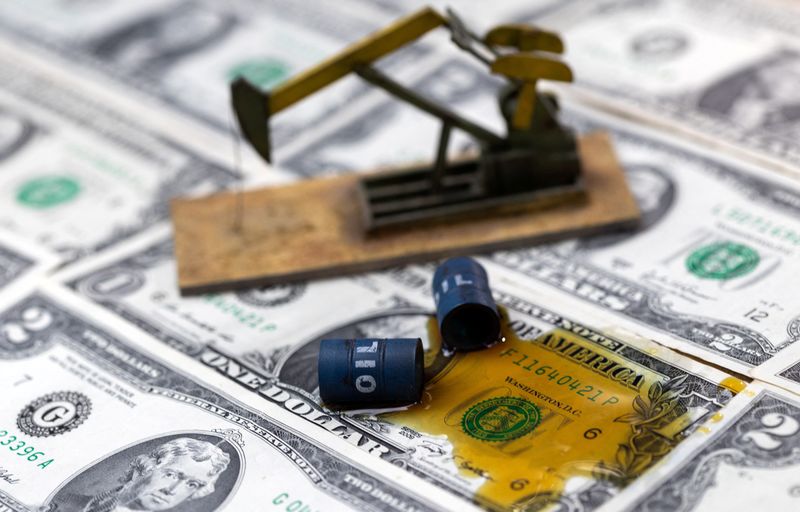By Stephanie Kelly
NEW YORK (Reuters) -Oil prices were near flat on Thursday as the market weighed tighter U.S. crude supplies with the higher likelihood of a U.S. interest rate hike that could dent energy demand.
Brent crude futures settled 13 cents lower at $76.52 a barrel, after a 0.5% gain the previous day.
U.S. West Texas Intermediate crude gained 1 cent to $71.80 a barrel, after rising 2.9% in post-holiday trade on Wednesday to catch up with Brent's gains earlier in the week.
The market has been expecting interest rates in the U.S. and Europe to rise further to tame stubborn inflation. Fears of a global recession mounted after recent surveys showing slower factory and services activity in China and Europe.
Minutes released on Wednesday showed that a united U.S. central bank agreed to hold rates steady at its June meeting to buy time and assess the need for further hikes, though most attendees expected they would eventually need to tighten further.
U.S. interest rate futures on Thursday increased the probability of another U.S. rate rise after news private payrolls surged last month.
"We know the Federal Reserve wants to see the labor market cool off," said Phil Flynn, an analyst at Price Futures group. "The market is concerned that the Fed has to take the punch bowl away."
Supporting prices were data from the Energy Information Administration that showed U.S. crude stockpiles fell by more than expected last week. [EIA/S]
Crude inventories fell by 1.5 million barrels in the last week to 452.2 million barrels, compared with analysts' expectations in a Reuters poll for a 1 million-barrel drop. U.S. gasoline and distillate inventories also dropped.
"While the inventories are supportive for oil prices today, the oil market is being dominated by fears of further rate increases," said Andrew Lipow, president at Lipow Oil Associates in Houston. "This is coming at a time when OPEC+, especially Saudi Arabia and Russia, are reiterating their commitment to rein in production and exports, respectively."
Top oil exporters Saudi Arabia and Russia announced a fresh round of output cuts for August. The total cuts now stand at more than five million barrels per day (bpd), equating to 5% of global oil output.
The cuts, along with a bigger than expected drop in U.S. crude stocks, provided some support for prices.
OPEC is likely to maintain an upbeat view on oil demand growth for next year when it publishes its first outlook for 2024 this month, predicting a slowdown from this year but still an above-average increase, sources close to OPEC told Reuters.

OPEC ministers and executives from oil companies told a two-day conference in Vienna that governments needed to turn their attention from supply to demand.
Rather than pressuring oil producers to curb supply, which heads of global energy companies say serves only to increase prices, governments should shift the focus to limiting oil demand to reduce emissions, they said.
